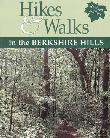SITE GUIDE
SEARCH
REVIEWS
FEATURES
NEWS
Etcetera and
Short Term Listings
LISTINGS
Broadway
Off-Broadway
NYC Restaurants
BOOKS and CDs
OTHER PLACES
Berkshires
London
California
DC
Philadelphia
Elsewhere
QUOTES
On TKTS
PLAYWRIGHTS' ALBUMS
LETTERS TO EDITOR
FILM
LINKS
MISCELLANEOUS
Free Updates
Masthead
Writing for Us
A CurtainUp  Berkshires Review
Berkshires Review
 Berkshires Review
Berkshires ReviewSee Rock City
By Elyse Sommer
|
Raleigh's never going to amount to nothing -- that's your cross to bear --Mrs. Brummett, the religious maxim spouting mother and mother-in-law from Hell about her son, to his wife. |

Eliza Baldi and Steve Kazee in See Rock City
|
Now, See Rock City, which begins where Nibroc left off, is having its world premiere at the Miniature Theatre. Don't be surprised if this sequel has as long an after life as its predecessor. It's a lovely chamber work with all the characters richly developed and enough nuances to invest the flavorful dialogue and setting with more depth than the old-fashioned, well-made play simplicity implies.
May and Raleigh's struggle to deal with the realities of their marriage, especially the constraints imposed on Raleigh's activities by the tragic limitations imposed by his epilepsy (much misunderstood in those days) is a microcosm of the macrocosm of America in the midst of World War II. Unlike some sequels, See Rock City doesn't take a giant leap forward in time. The war still overhangs everything so the two plays are very much of a piece. However, if you didn't see the train encounter that resulted in May and Raleigh's burgeoning romance, you'll have no sense of missing important parts of their story as Ms. Hutton has woven in enough of the details from Nibroc for See Rock City to stand on its own. The script once again showcases her terrific ear for regional dialogue and the ability to make us root for her characters' happiness. The fact that Eliza Baldi and Steve Kazee (Kazee, a Kentucky native, comes to his accent naturally) are quite ideally cast as May and Raleigh further insures our becoming fully involved with them.
There is a clear difference in May and Raleigh's personalities and backgrounds. May, a school principal is the practical one grew up in a nurturing home; Raleigh, gentler and more creative, was raised in a dirt poor, unloving environment. While both are bedeviled by stated and unstated frustrations, Baldi and Kazee leave no doubt as to the passion and love they have for each other.
The two mothers who have doubled the size of the Nibroc cast are somewhat stereotypical -- Mrs. Gill, May's the heart-of-gold, loving and supportive mamma; Mrs. Brummett, the Christian adage spouting harridan who still whips her son metaphorically as she did literally when he was a child. Yet Kathy Lee Hart is so endearing as Mamma Gill and Susanne Marley so deliciously intolerant as Mama Brummett that real people emerge from the stock character outlines.
The set too is somewhat more elaborate than the two-seater bench that served as a railroad car seat, a park bench and a chintz covered sofa on May's front porch in Corbin. Instead of a sofa to suggest that porch, Regina Garcia has created a simple but handsome open deck leading to the interior of the Gill house and the land in back where the never seen Mr. Gill has his carpentry workshop. The right aisle serves as a road leading to the front steps of the porch. It is from this "road" that May and Raleigh first come on stage, back from a belated honeymoon trip to Rock City -- an actual tourist attraction atop Lookout Mountain in Georgia that's famous for its ancient rock formations, gardens, breathtaking panoramic views -- and bird houses.
Though it turns out that May and Raleigh got detoured to Cincinnati they nevertheless managed to bring back a bird house close enough to the real thing to please his hard to please mother. The missed honeymoon destination serves as a humorous opening even as it hints that there may be many disappointments to be dealt with in this marriage -- the major one being Raleigh's frustration at the drop-off in the sale of his Norman Rockwell Southern style stories and his inability to find other work because of the misconceptions about epilepsy.
Overarching all the concerns aired on the Gill porch is the war. Victor Maog, whose overall direction is subtly understated, smartly establishes the progression of world events with snippets of radio broadcasts, often incorporated into the dialogue that follows; for example, the announcement about the dropping of the atom bomb has May pondering "What would Roosevelt have done?"
Ultimately the effect of the war's end on the family and on May's job and a letter from the renowned editor Maxwell Perkins pose the biggest challenge to the strength of the family and marital bonds. As Hutton hasn't indulged herself in a mere exercise in nostalgia, neither has she settled for an ending that neatly ties up all the loose ends. For that, you'll have to use your imagination -- or wait for Hutton to turn her pair of plays into a trilogy -- which wouldn't be a bad idea.
To read more details about May and Raleigh's courtship, check out my review of The Last Train to Nibroc
|
SEE ROCK CITY
Playwright: Arlene Hutton Director: Victor Maog Cast: Eliza Baldi (May, Mrs. Gill (Kathy Lee Hart), Raleigh (Steve Kazee), Mrs. Brummett (Susanne Marley) Set Design: Regina Garcia Costume Design: Rebecca B;ernstein Lighting Designer: Lara Dubin Composer: Bart Fassbender Running Time: 85 minute, no intermission Miniature Theatre of Chester, Chester Town Hall, 413-354-7771 www.miniaturetheatre.org August 7 to August 28, 2005 Wed to Sat @8, Thursdays and Sundays at 2pm -- $21-$15; $10 students . Reviewed by Elyse Sommer based on August 18th matinee performance |

Berkshire Hikes &
The Berkshire Book

6,500 Comparative Phrases including 800 Shakespearean Metaphors by CurtainUp's editor.
Click image to buy.
Go here for details and larger image.



